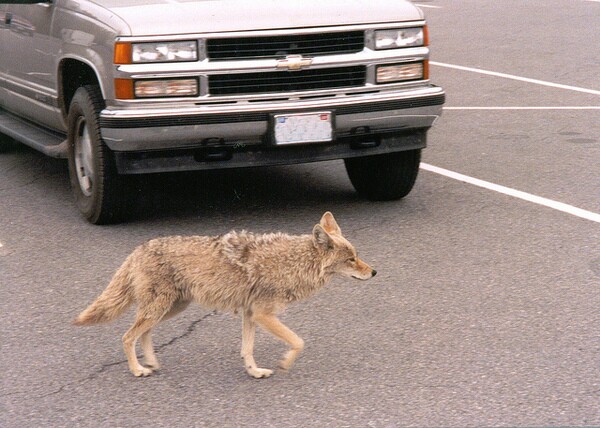Group Opposes Coyote Cull in Seal Beach

Animal welfare activists are opposing the use of gas chambers to kill coyotes in Seal Beach, and have scheduled a demonstration Sunday to make that opposition public.
Coyote sightings are increasing in the Long Beach area, and Seal Beach residents have been asking for their city to respond to an increasing number of apparent coyote attacks on pets. In response, the city has hired an animal control contractor, "Critter Busters," to cull the local coyote population.
But the contractor has been using a controversial method of euthanasia to kill coyotes whose use is discouraged under all but the most controlled circumstances by the American Veterinary Medical Association (AVMA): asphyxiating the animals with carbon dioxide in closed chambers. And wildlife advocates charge that killing Seal Beach coyotes is approaching the issue from the wrong end.
"The city council's eye for an eye coyote killing program is an ill-conceived overreaction," said Anja Heister, director of the Wild and Free - Habitats Campaign for In Defense of Animals. "Their plan fails to take into account reckless human behavior, including people leaving food sources outside -- and even worse -- residents apparently actually feeding the coyotes. Eliminate the reasons the coyotes are coming into town and the coyotes won't be an issue."
The coyote cull in Seal Beach began on September 29, and is scheduled to continue for two weeks. Coyotes will be trapped and then killed by asphyxiation with carbon dioxide in a so-called "gas chamber."
California does not allow the use of gas chambers for euthanizing domestic dogs and cats, instead requiring that those animals be euthanized by a lethal injection of sodium pentobarbitol. That's in part due to the physical and emotional stress both confinement and asphyxiation can cause animals. According to the AVMA's 2013 Guidelines for the Euthanasia of Animals, exposure to high concentrations of carbon dioxide can actually induce fear directly through its chemical effect on the exposed animals' nervous systems.
The California law prohibiting gas chamber use for veterinary euthanasia doesn't apply to coyotes, however.
Regardless of the type of euthanasia used during the cull, opponents say the cull itself is short-sighted. For instance, killing those coyotes unwary enough to get themselves trapped simply means the coyotes left behind will be some combination of smarter and more careful, and breeding smarter, warier coyotes is hardly likely to result in reduced pet deaths in the long term.
The group Empty Cages Los Angeles, which is opposing the cull, is pointing out that "hazing" problem coyotes -- scaring them away when they become too bold around humans and pets -- is a more effective long-term solution to the coyote conflict issue, as it works to make coyotes more hesitant to tangle with humans rather than killing nearly random coyotes once a problem has been established.
And of course securing trash, cleaning up fallen fruit, feeding pets inside and refraining from deliberately feeding coyotes are crucial ways to keep those coyotes wild as well.
Empty Cages has called for a demonstration in downtown Seal Beach on Sunday to focus attention on the cull.
Emotions are high on both sides of the issue, with many local supporters of the cull pointing to a 2013 attack on a Long Beach toddler as evidence of increased threat to people from urban coyotes. Experts advise that such attacks are rare, even with increasing coyote presence in cities -- and with increasing human settlement in coyote habitat. The coyote responsible for the 2013 attack was killed the same day, according to the California Department of Fish and Wildlife, and press accounts suggest the child may have inadvertently triggered the attack by running away.
All the more reason to focus on education about safe conduct in coyote country, no matter your opinion on the cull in Seal Beach.


